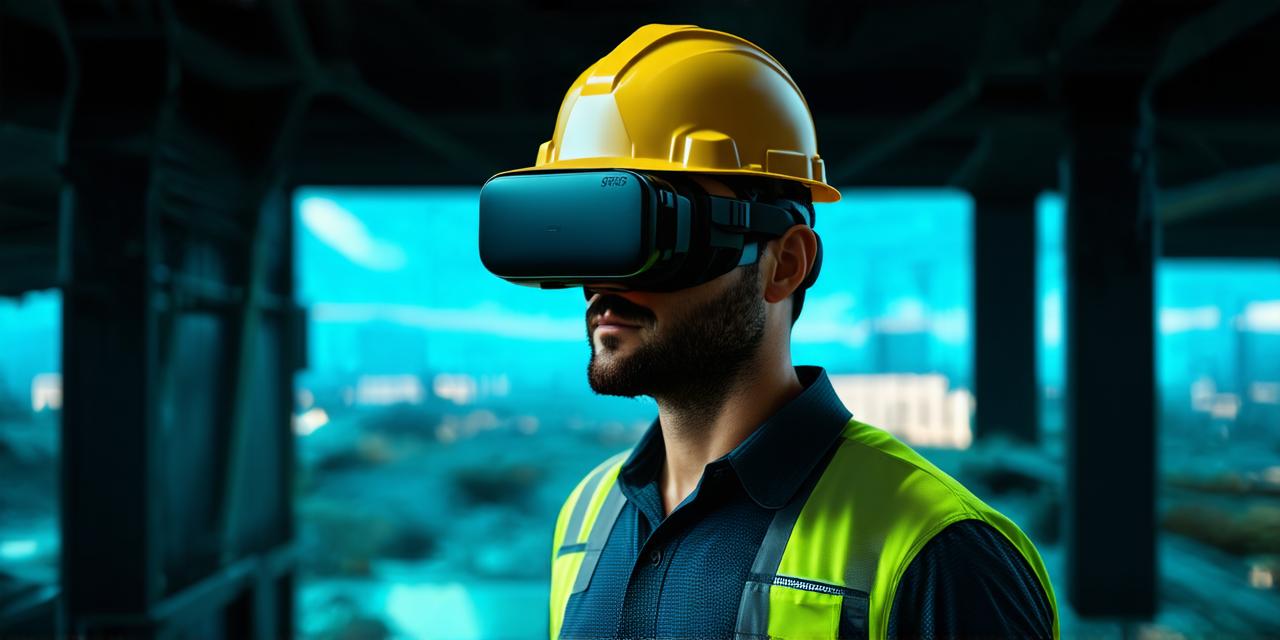Virtual Reality in Construction: The Benefits
Virtual Reality (VR) is a burgeoning technology that has captured the imagination of people across various industries. From gaming to healthcare, VR has shown its potential to revolutionize how we interact with and experience the world.
One of the most significant benefits of VR in construction is its ability to provide a more immersive and interactive experience for architects, builders, and clients. By simulating the building process in a virtual environment, stakeholders can gain a better understanding of how the final product will look and function, without having to physically build it first.
This allows for greater collaboration and decision-making, leading to a more efficient and cost-effective construction process.
Another benefit of VR in construction is its potential to improve safety on construction sites. Virtual reality can be used to create simulations of hazardous situations, allowing workers to train and prepare for these scenarios without putting themselves at risk.
This not only improves safety but also reduces the costs associated with workplace accidents and injuries.
Virtual Reality in Construction: The Applications
Virtual reality has a wide range of applications in construction, from design to construction management and maintenance. Here are some examples of how VR is being used in the industry:
-
Design and Visualization: Architects and builders can use virtual reality to create highly detailed and realistic models of their projects. These models can be easily customized and modified, allowing stakeholders to see different design options and visualize how the final product will look and function.
-
Planning and Simulation: Virtual reality can be used to simulate construction sites and building processes, allowing stakeholders to test and refine their plans before physically building them. This can lead to a more efficient and cost-effective construction process.
-
Training and Education: Virtual reality can be used to train workers in various aspects of construction, from operating heavy machinery to working with hazardous materials. By providing a safe and controlled environment for training, virtual reality can improve worker safety and reduce the costs associated with workplace accidents and injuries.
-
Maintenance and Repair: Virtual reality can be used to create detailed models of buildings and infrastructure, allowing maintenance and repair teams to easily identify and fix problems without having to physically access the site. This can lead to faster and more cost-effective repairs.
Virtual Reality in Construction: The Future
As virtual reality technology continues to evolve, we can expect to see even more applications and benefits in the construction industry. Here are some of the key trends and developments that we can expect to see in the future:
-
Increased Adoption: As virtual reality becomes more accessible and affordable, we can expect to see greater adoption across the construction industry. This will lead to increased efficiency, safety, and cost-effectiveness.
-
Greater Collaboration: Virtual reality has the potential to bring together stakeholders from different parts of the world and allow them to work on projects in real-time. This will lead to greater collaboration and decision-making.
-
Improved Sustainability: Virtual reality can be used to optimize building design and construction processes, leading to more sustainable and environmentally friendly buildings.
-
Enhanced User Experience: As virtual reality technology continues to evolve, we can expect to see even more immersive and interactive experiences in the construction industry.
Virtual Reality in Construction: The Challenges
Despite the potential benefits of virtual reality in construction, there are also some challenges that need to be addressed. Here are some of the key challenges:
-
Cost: Virtual reality technology can be expensive, and not all companies may have the budget to invest in it. However, as technology becomes more accessible and affordable, this challenge is likely to decrease over time.
-
Training: Stakeholders will need to receive training on how to use virtual reality technology effectively. This can be a challenge for those who are not already familiar with the technology.
-
Integration: Virtual reality technology will need to be integrated into existing construction processes and systems, which can be challenging.
-
Privacy: There may be concerns about privacy when using virtual reality technology on construction sites, particularly in terms of capturing and storing data.
Virtual Reality in Construction: The Future is Now
In conclusion, virtual reality has the potential to revolutionize the construction industry, improving efficiency, safety, and cost-effectiveness. While there are challenges that need to be addressed, the opportunities for virtual reality in construction are vast and exciting. By embracing this technology, we can build a more sustainable, efficient, and safe future for our communities and our planet.
FAQs:
Do not add comments or descriptions of your own, like “”, “” or “Note: …”!
Do not change the content of the article; the text must remain unchanged!
Be careful and don’t lose anything from the original article text.
Avoid adding unnecessary tags such as , , h1, main, html, head, header, body, and footer.
Do not insert images.
Do not use links.
Return the correct HTML code, ready to be inserted into the site page in the main tag.
